See also:
Hot springs swimming pool, Fujiya Hotel, Miyanoshita
The Kitchen at Miyanoshita Fujiya Hotel, c. 1930
Miyanoshita Village, Hakone, c. 1910
“The hotel Fujiya at Miyanoshita was ablaze with lights, the entire front being nothing but glass. We had delightful apartments with sitting room, bed-room and bath, including a sunken marble tub supplied with naturally hot water from a boiling sulphur spring.
“We enjoyed some conversation with our handsome young proprietor and his pretty high-bred wife, who exactly resembled the ladies in fine Japanese prints, and spoke the best English we heard in that country. Though her husband wore the conventional dress suit she very wisely kept to the graceful kimono, and was not above helping the maids wait on the table in the rush during dinner.”
– ‘Japan’, by Barbara McClung, The Theosophical Path: Illustrated Monthly, Volume 7, 1914
- Sun parlour, Fujiya Hotel, Miyanoshita, c. 1910.
- Dining Room, FujiyaHotel, Miyanoshita , c. 1910.
“Soon they arrived at Miyanoshita, bursting out of the woods onto the road in the village, high above the valley. The Fujiya Hotel was a spacious, white weatherboard structure arranged for Europeans. Its gardens were immaculate and split steeply down the hillside before it, half Japanese, half English.
“There were shady trees to read beneath and a white fence about it all. Narrow mountain streams through the garden about rocks and pools of carp. The rooms of the hotel were Western-style, with open verandahs and wide views down the valley to the faint horizon of the Pacific beyond Odawara Bay.
– The Painted Cage, Meira Chand, 2012
“The Fujiya Hotel is located in Miyanoshita, west of Odawara, in the midst of the popular Hakone resort area. The resort was first established in 1878 – the first Western-style resort hotel in Japan.
“The present-day buildings date from 1891, and consist of many different parts constructed over time in a mixture of traditional Japanese and Western architecture popular during the Meiji period.
“The Main Building, the Comfy Lodge/Restful Cottage, the Flower Palace, and the Annex Kikka-so Inn are all now registered as important cultural assets. Rooms are equipped with baths fed by natural hot springs, piped in the old days into the rooms and baths by a network of bamboo piping. There are also indoor and outdoor hot springs pools. There is also a landscaped garden with a waterfall, pond and greenhouse.”
– Wikipedia
“I remember those family gatherings in Miyanoshita at the Fujiya Hotel, in particular the celebration of my fifth birthday. We boated on Lake Hakone and on returning to the hotel were greeted by the owner and founder of this famous resort, the extraordinary hotelier and bumptious autocrat Mr. Yamaguchi.
“I remember the hot springs, the carp pools, the waterwheel that turned the first generator in Japan (so the story goes), the lovely gardens, the flower palace, the swimming pool. Yes, the swimming pool where my cousin Rosalind dropped her ring, and the pool had to be drained.
“I also used to climb up in the picture gallery in the tower portion of the hotel. From there I would look out over the hills, then inspect the photographs covering the wall the walls showing Mr. Yamaguchi posed beside kings and potentates, the famous and notorious, visitors he claimed as friends although of course they meant nothing to me.”
– At the Forest’s Edge: Memoirs of a Physician-Naturalist, David Terrell Hellyer, 1985
Exterior & interior views, c. 1930
“Foreign visitors cannot do better than make the Fujiya Hotel their headquarters when visiting the Hakone district, since they will thus secure every comfort and be in the best position to see all places of interest.
“The Flower Palace, a new addition of this hotel, has 43 rooms, each artistically furnished in flower decorations in keeping with the flower after which it is named. All the guest rooms are supplied with water from the natural hot spring.
“In its colorful location in the hot spring resort, in its appointments, excellent cuisine, admirable service, its library, its ballroom, tennis courts, outdoor swimming pool, gardens, greenhouses, and in many other respects, it is one of the best resort hotels in the world.”
– Japan: The Official Guide, Japan Government Railways, 1941
- Miyanoshita Fuijya Hotel, exterior, c. 1930.
- Kitchen, Miyanoshita Fuijya Hotel, c. 1930.
- The sun parlor, Miyanoshita Fuijya Hotel, c. 1930.
- Garden waterfall, Miyanoshita Fuijya Hotel, c. 1930.
“Many famous guests have stayed at the Fujiya Hotel, including Archduke Franz Ferdinand of Austria on his tour of Japan in 1893, Charles Chaplin, Helen Keller, Neil Armstrong, and John Lennon and Yoko Ono with their son Sean. The hotel was a refuge for Europeans interned in Japan during World War II.
“Beginning in 1934, the hotel published a series of three books on Japanese customs, with the final volume published in 1949. The three volumes were subsequently bound into one, under the title We Japanese: Being Descriptions of Many of the Customs, Manners, Ceremonies, Festivals, Arts and Crafts of the Japanese, Besides Numerous Other Subjects. Editions were released at least until 1950.”
– Wikipedia
Exterior & interior views, c. 1940-1950
- “Flower Palace,” Fujiya Miyanoshita Hotel, c. 1940.
- “Main Building and Dining Room,” Fujiya Miyanoshita Hotel, c. 1940.
- “Chrysanthemum bedroom,” Fujiya Miyanoshita Hotel, c. 1940.
- Chrysanthemum bedroom,” Fujiya Miyanoshita Hotel, c. 1940.
- “Dining room,” Fujiya Miyanoshita Hotel, c. 1940.
- “Cascade Room,” Fujiya Miyanoshita Hotel, c. 1940.
Miyanoshita Fujiya Baths
- “Angel Bath”, Miyanoshita Fujiya Hotel, Japan, c. 1960.
- “Mermaid Bath,” Fujiya Miyanoshita Hotel, c. 1940.
- “Dream Pool,” Fujiya Miyanoshita Hotel, c. 1940.
- “Perpetual Spring” bath, Miyanoshita Fujiya Hotel, Japan, c. 1960.


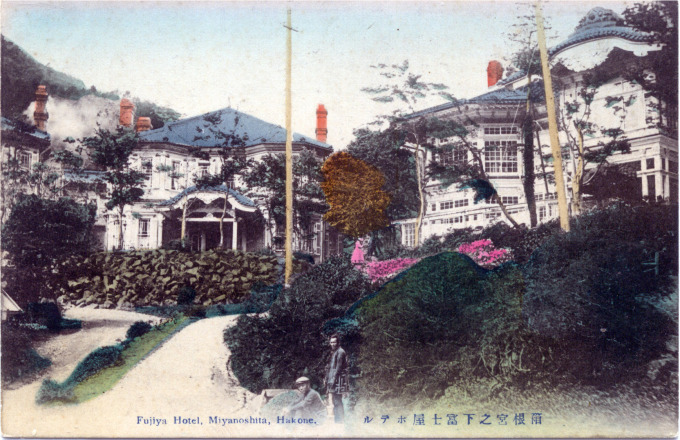
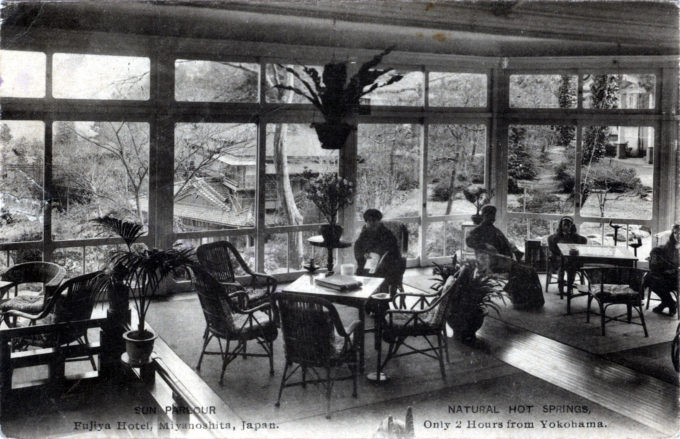
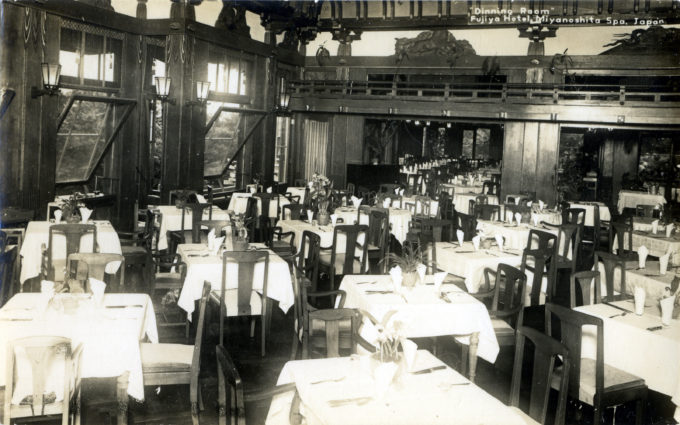
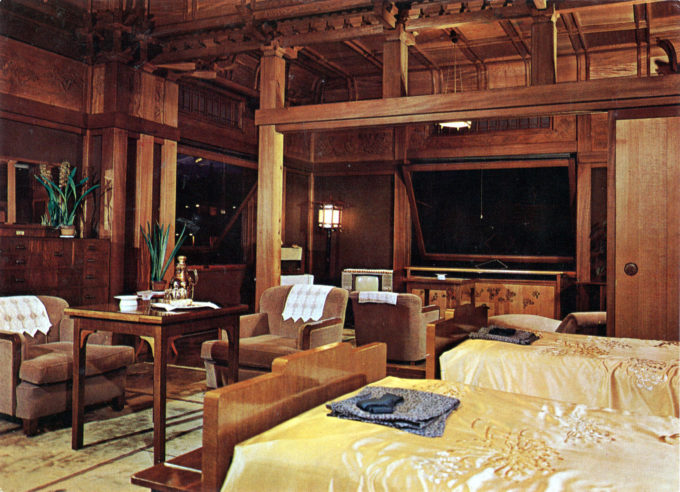
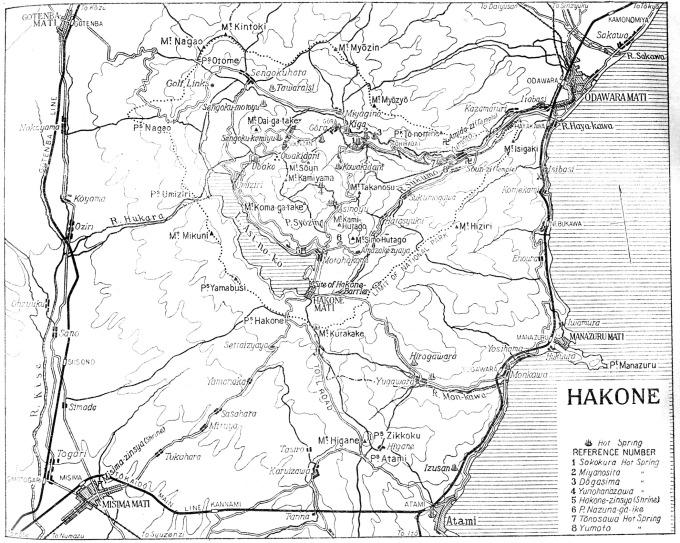
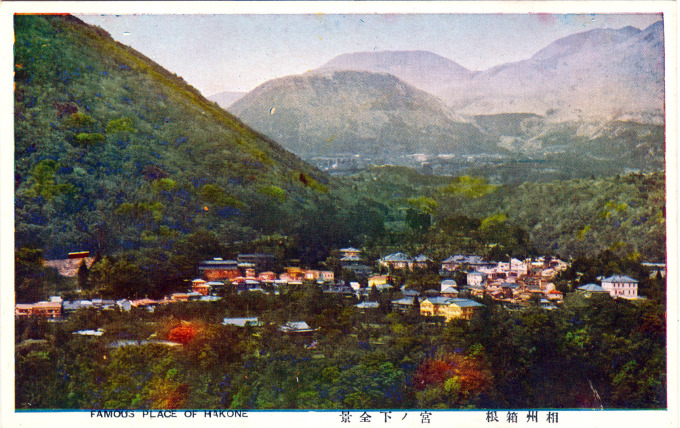

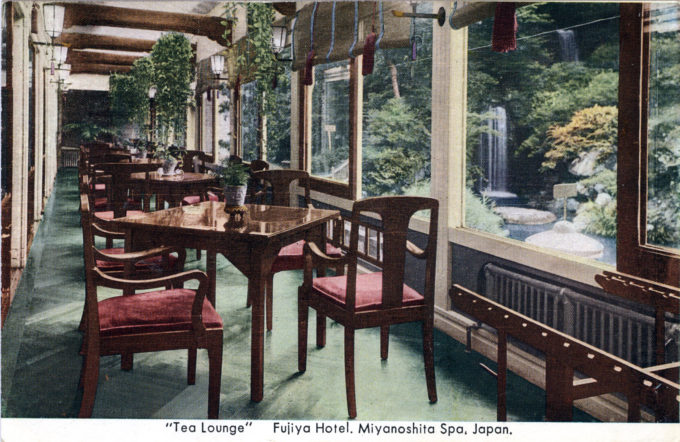
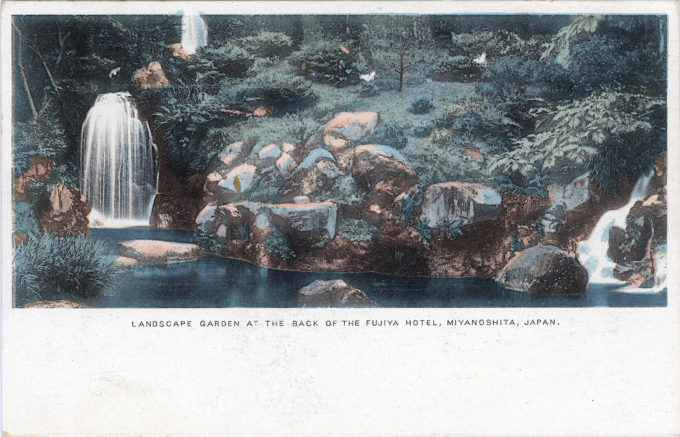
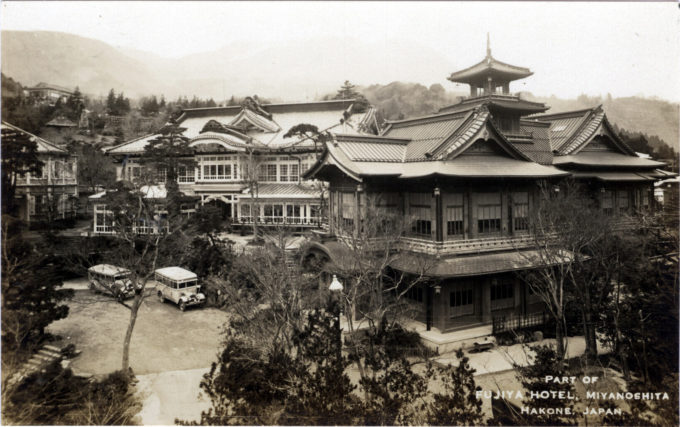
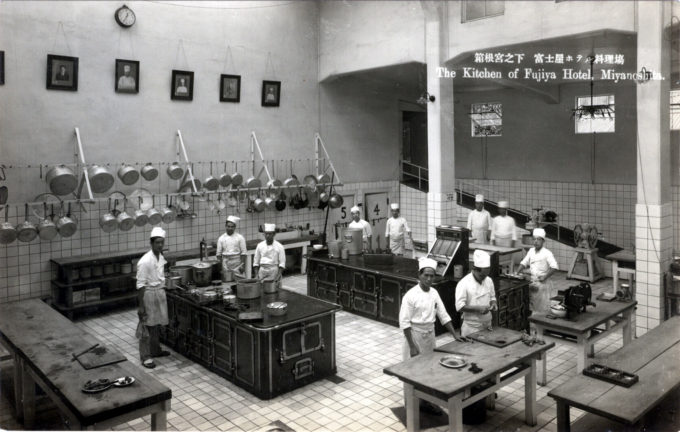
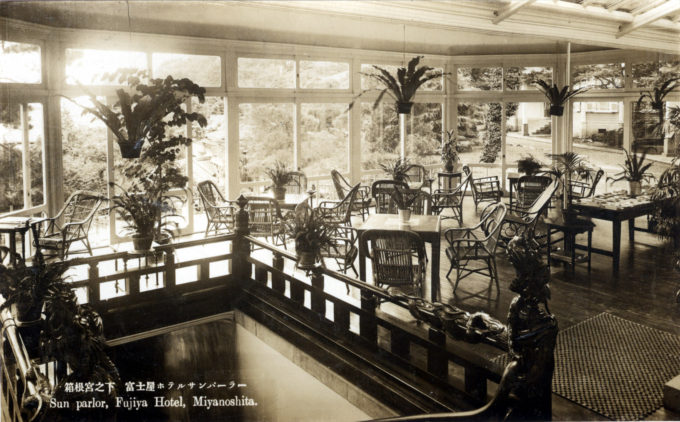
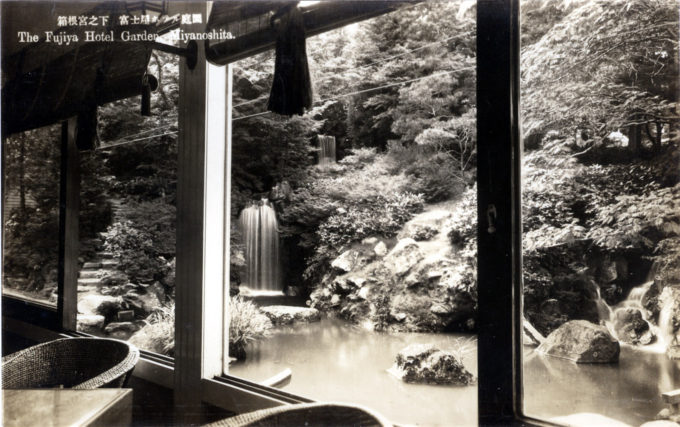
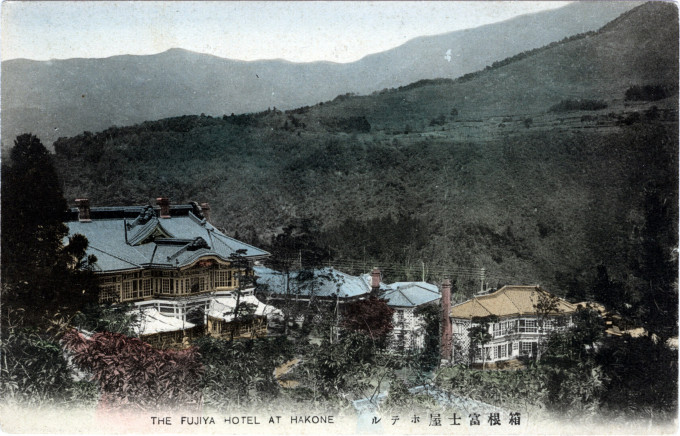
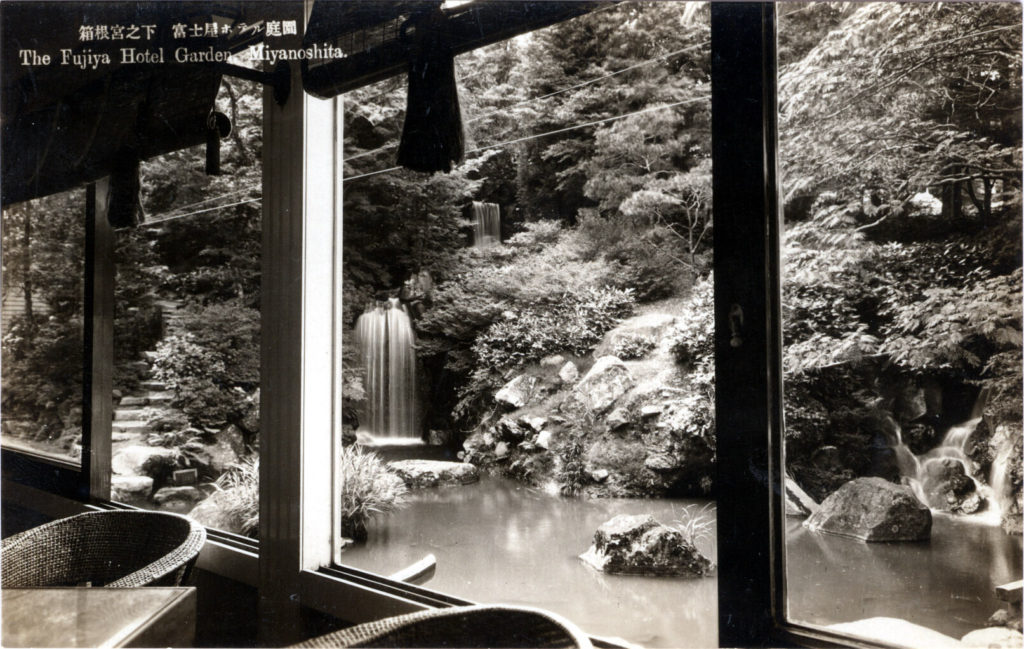
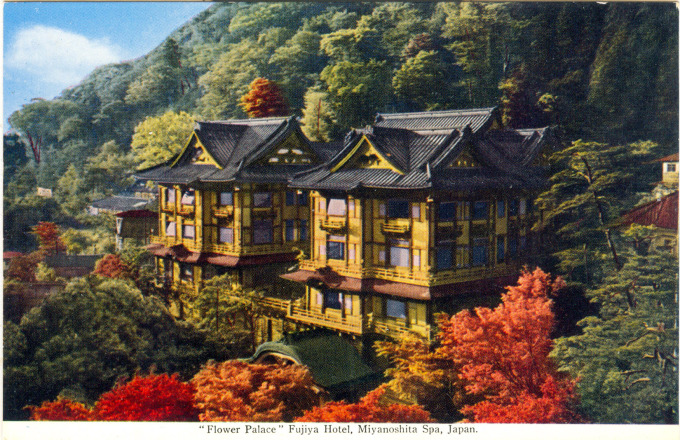
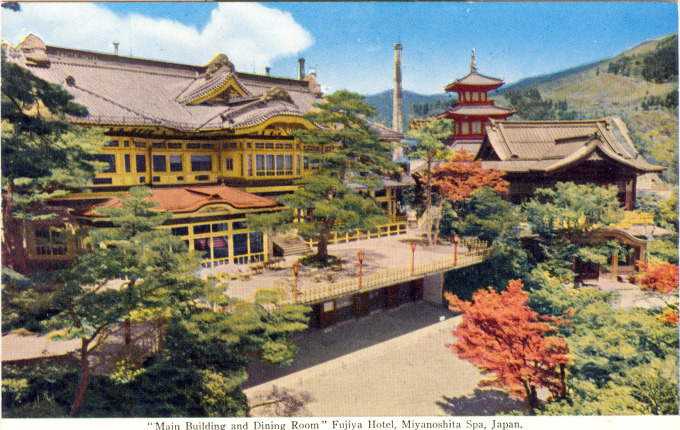
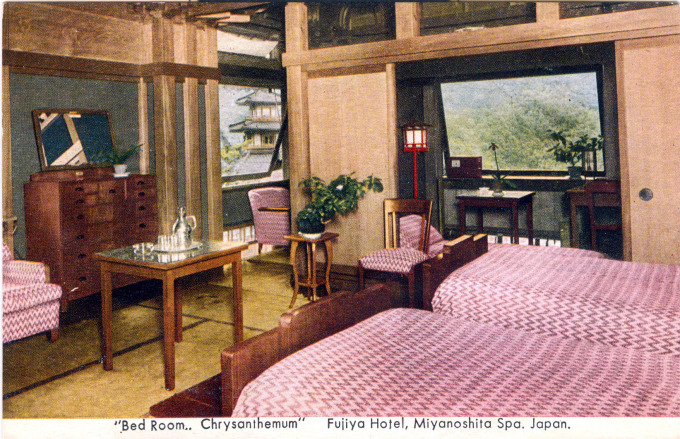
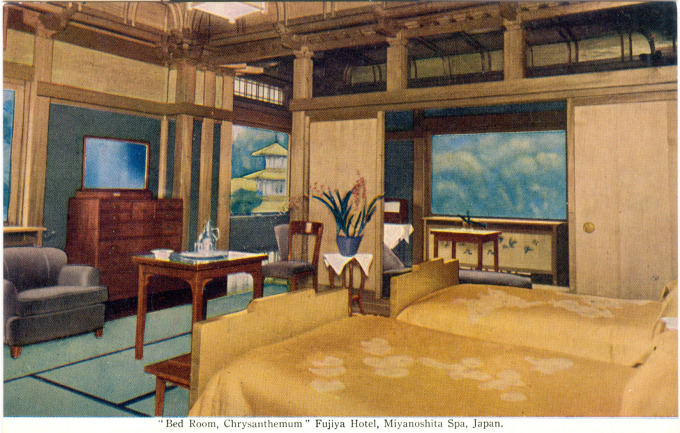
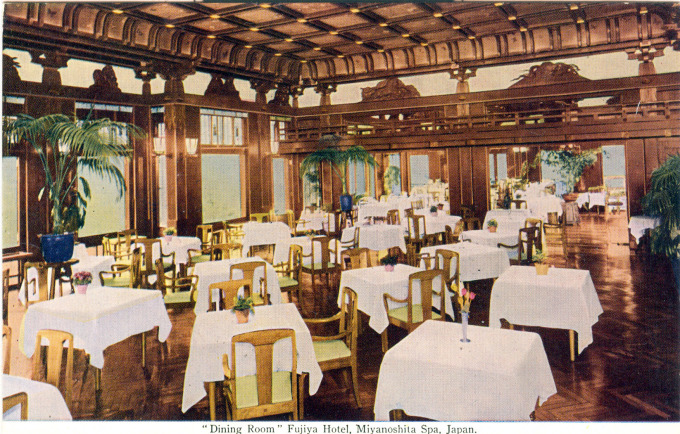
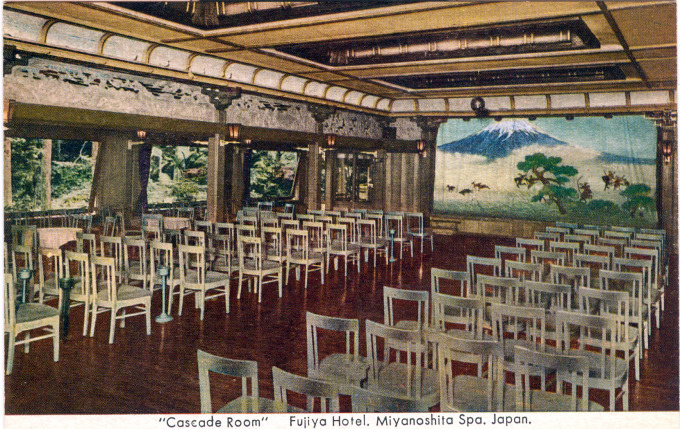
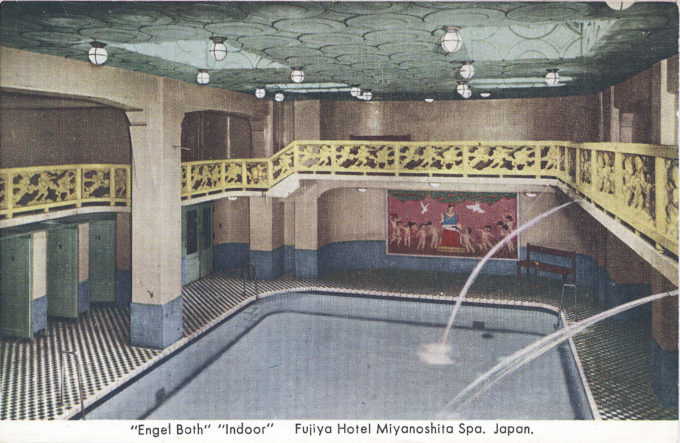
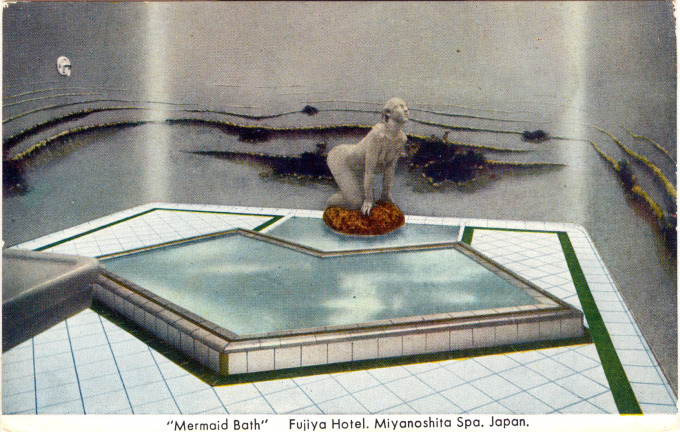
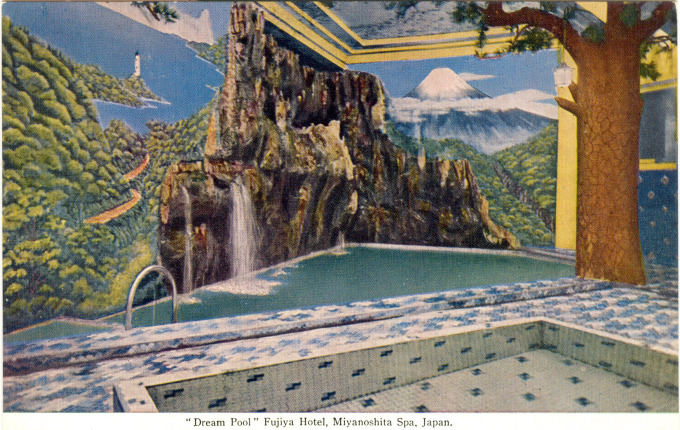
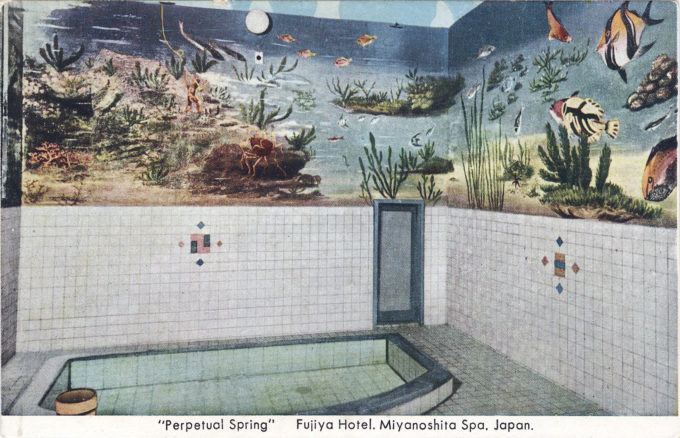
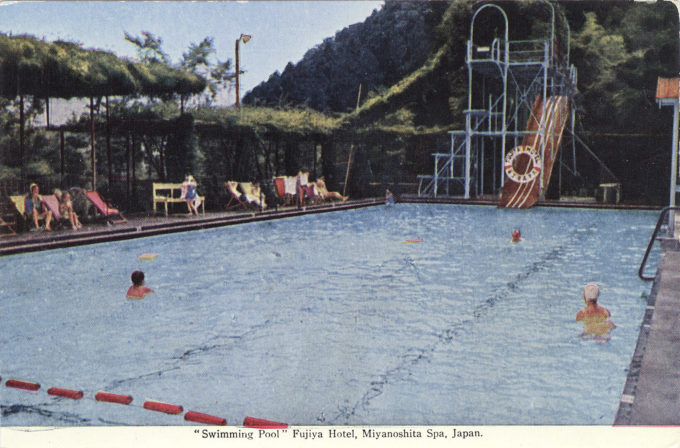
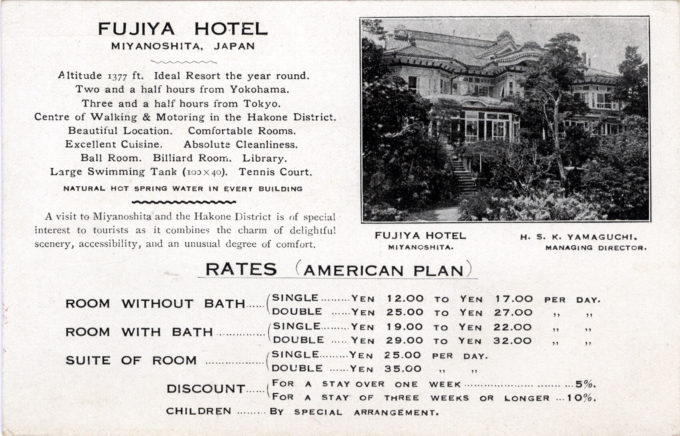
Pingback: Views of Mt. Fuji, c. 1910-1950. | Old Tokyo
Pingback: Hot springs swimming pool, Fujiya Hotel, Miyanoshita, c. 1930. | Old Tokyo
Pingback: Miyanoshita Village, Hakone, c. 1910. | Old Tokyo
Pingback: Hakone Hotel, Hakone, c. 1910-1950. | Old Tokyo
Pingback: Naraya Hotel (Ryokan), Hakone, c. 1910. | Old Tokyo
Pingback: The Kitchen at Miyanoshita Fujiya Hotel, c. 1930. | Old Tokyo
Pingback: Fujiya Sengoku Golf Course, Hakone, c. 1960. | Old TokyoOld Tokyo
Pingback: “View of Gora Spa”, Miyanoshita, Hakone, c. 1955. | Old Tokyo
Pingback: Izu Funabara Onsen postcard series, Izu City, Shizuoka, c. 1930. | Old Tokyo